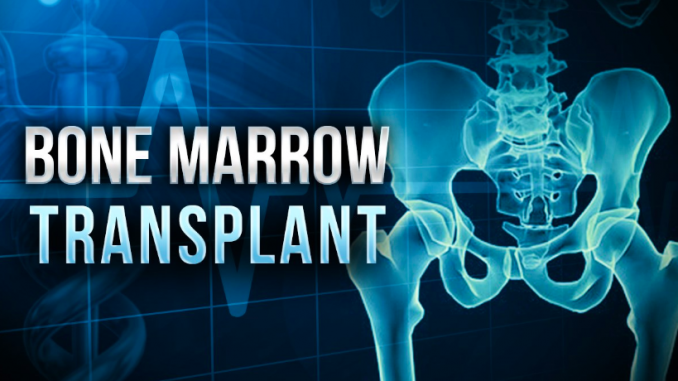
- Bone marrow is the soft, fatty tissue inside our bones which consists of stem cells that produce different blood cells.
- A procedure in which bone marrow that is diseased or damaged is replaced with healthy bone marrow is called bone marrow transplantation.
- It is one of the methods of combating disorders of blood-forming tissues such as aplastic anemia, leukemia and lymphoma.
- The purpose of bone marrow transplantation is to introduce normal blood cells into the bloodstream of the patient.
- To ensure a high degree of compatibility between donor and recipient, so that the recipient will not reject the donated marrow, physicians try to match six tissue factors called human leukocyte antigens (HLA).
- Before the transplant, chemotherapy, radiation, or both may be given. At this time, and for a period following the transplantation, the patient is vulnerable because the immune system is compromised.This may be done in 2 ways:
- Ablative (myeloablative) treatment:
- High-dose chemotherapy, radiation, or both are given to kill any cancer cells.
- This also kills all healthy bone marrow that remains, and allows new stem cells to grow in the bone marrow.
- Reduced intensity treatment:
- This is also called a mini transplant.
- Lower doses of chemotherapy and radiation are given before a transplant which allows older people, and those with other health problems to have a transplant.
- Ablative (myeloablative) treatment:
Procedure:
- The patient is treated before the transplantation with high doses of radiation and/or chemotherapy to remove all cells from the bone marrow.
- About 500-700 ml of bone marrow from a compatible donor (preferably a twin or sibling) is aspirated (removed by suction) from the donor’s pelvic bones (usually from the iliac crest).
- A large hypodermic needle is attached to the syringe for this process.
- Only a small incision is necessary to aspirate the bone marrow, which is always to be done by an expert.
- Donor stem cells can be collected in two ways:
- Bone marrow harvest:
- This minor surgery is done under general anesthesia.
- The bone marrow is removed from the back of both hip bones.
- The amount of marrow removed depends on the weight of the person who is receiving it.
- Leukapheresis:
- First, the donor is given several days of shots to help stem cells move from the bone marrow into the blood.
- Blood is removed from the donor through an IV line.
- The part of white blood cells that contains stem cells is then separated in a machine and removed to be later given to the recipient.
- The red blood cells are returned to the donor.
- Bone marrow harvest:
- The removed marrow is mixed with an anticoagulant (heparin) and then filtered.
- The filtration separates the donor’s T-cells, which would otherwise encourage rejection of the marrow by the recipient.
- The recipient receives the donor’s marrow through an intravenous infusion (just like blood transfusion).
- Two units of donor’s blood, which were removed during two sessions about a week before the transplantation, are transfused back into the donor to replace the blood aspirated along with the marrow.
- There are three kinds of bone marrow transplants:
- Autologous bone marrow transplant:
- Stem cells are removed from our body before we receive high-dose chemotherapy or radiation treatment.
- The stem cells are stored in a freezer. After high-dose chemotherapy or radiation treatments, our stems cells are put back in our body to make normal blood cells. This is called a rescue transplant.
- Allogeneic bone marrow transplant:
- Stem cells are removed from another person, called a donor.
- Most times, the donor’s genes must at least partly match our genes (twins, siblings).
- A brother or sister is most likely to be a good match. Sometimes parents, children, and other relatives are good matches.
- Special tests are done to see if a donor is a good match for us.
- People who are not related to us, yet still match, may act donors.
- Umbilical cord blood transplant:
- This is a type of allogeneic transplant.
- Stem cells are removed from a newborn baby’s umbilical cord right after birth.
- The stem cells are frozen and stored until they are needed for a transplant.
- Umbilical cord blood cells are very immature so there is less of a need for perfect matching.
- Autologous bone marrow transplant:
- The success of bone marrow transplantation isn’t assured fully until the reseeding of the marrow with healthy cells is established.